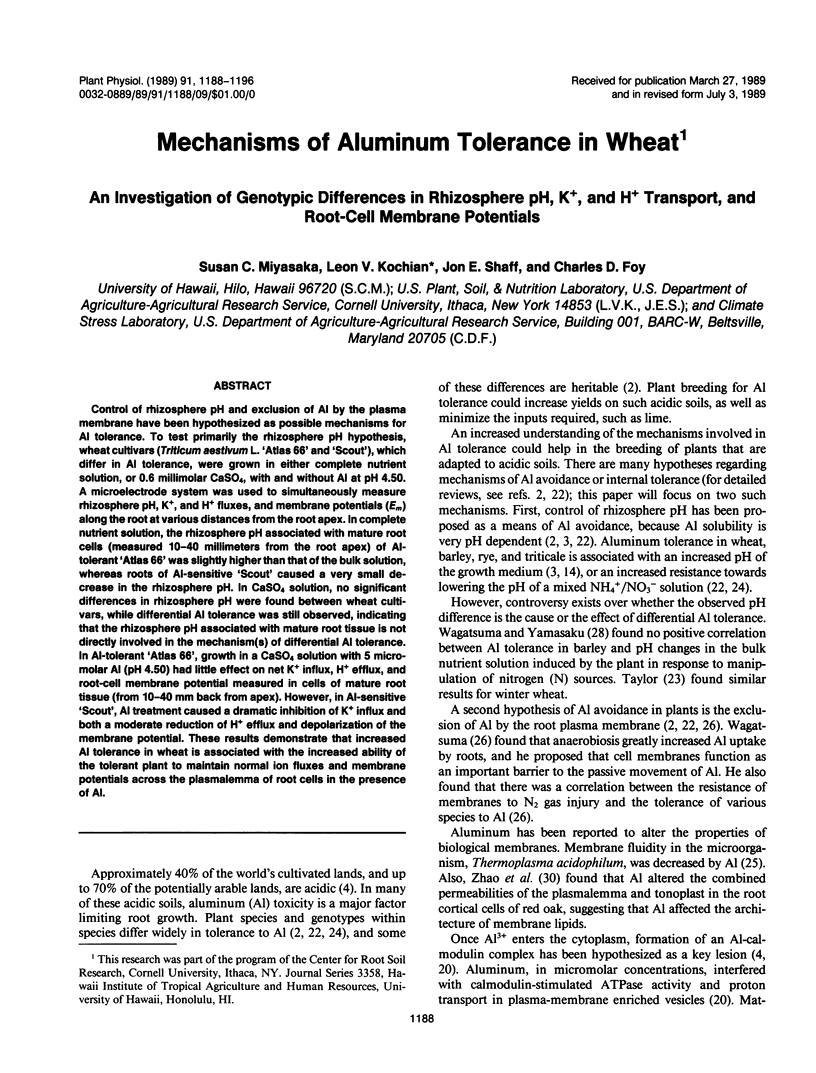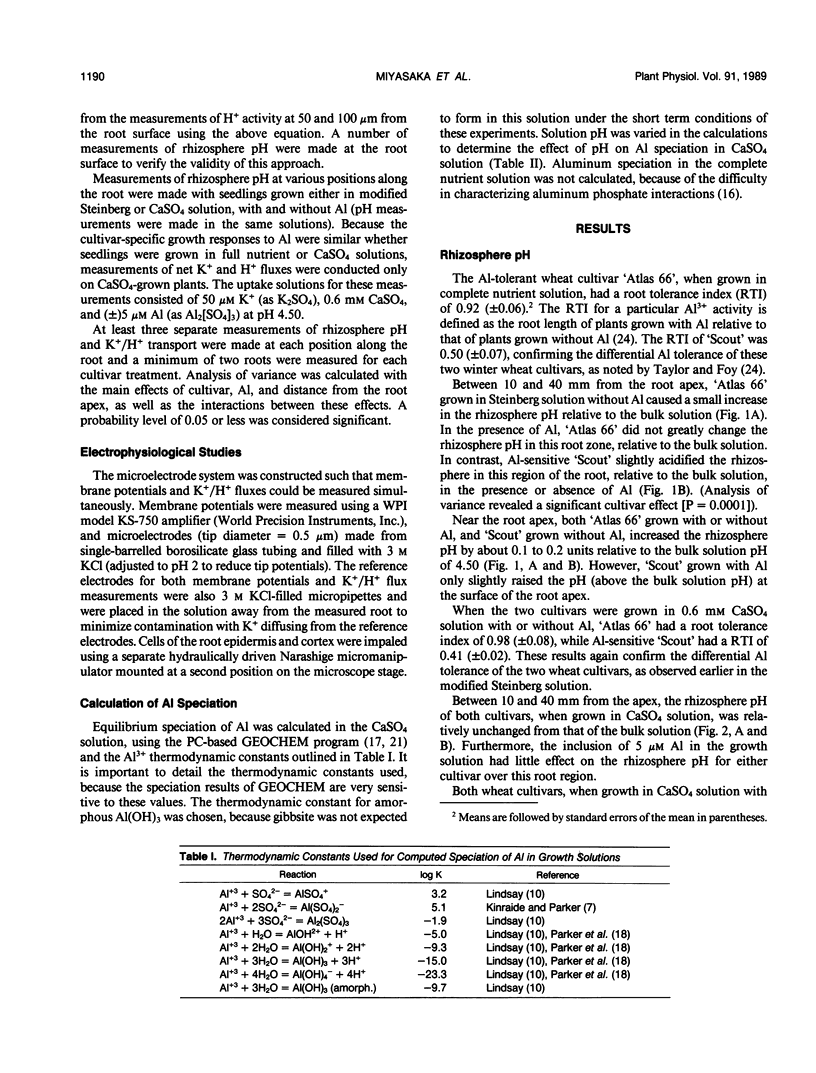Abstract
Control of rhizosphere pH and exclusion of Al by the plasma membrane have been hypothesized as possible mechanisms for Al tolerance. To test primarily the rhizosphere pH hypothesis, wheat cultivars (Triticum aestivum L. `Atlas 66' and `Scout'), which differ in Al tolerance, were grown in either complete nutrient solution, or 0.6 millimolar CaSO4, with and without Al at pH 4.50. A microelectrode system was used to simultaneously measure rhizosphere pH, K+, and H+ fluxes, and membrane potentials (Em) along the root at various distances from the root apex. In complete nutrient solution, the rhizosphere pH associated with mature root cells (measured 10-40 millimeters from the root apex) of Al-tolerant `Atlas 66' was slightly higher than that of the bulk solution, whereas roots of Al-sensitive `Scout' caused a very small decrease in the rhizosphere pH. In CaSO4 solution, no significant differences in rhizosphere pH were found between wheat cultivars, while differential Al tolerance was still observed, indicating that the rhizosphere pH associated with mature root tissue is not directly involved in the mechanism(s) of differential Al tolerance. In Al-tolerant `Atlas 66', growth in a CaSO4 solution with 5 micromolar Al (pH 4.50) had little effect on net K+ influx, H+ efflux, and root-cell membrane potential measured in cells of mature root tissue (from 10-40 mm back from apex). However, in Al-sensitive `Scout', Al treatment caused a dramatic inhibition of K+ influx and both a moderate reduction of H+ efflux and depolarization of the membrane potential. These results demonstrate that increased Al tolerance in wheat is associated with the increased ability of the tolerant plant to maintain normal ion fluxes and membrane potentials across the plasmalemma of root cells in the presence of Al.
Full text
PDF








Selected References
These references are in PubMed. This may not be the complete list of references from this article.
- Kinraide T. B. Proton extrusion by wheat roots exhibiting severe aluminum toxicity symptoms. Plant Physiol. 1988 Oct;88(2):418–423. doi: 10.1104/pp.88.2.418. [DOI] [PMC free article] [PubMed] [Google Scholar]
- Newman I. A., Kochian L. V., Grusak M. A., Lucas W. J. Fluxes of h and k in corn roots : characterization and stoichiometries using ion-selective microelectrodes. Plant Physiol. 1987 Aug;84(4):1177–1184. doi: 10.1104/pp.84.4.1177. [DOI] [PMC free article] [PubMed] [Google Scholar]
- Pfeffer P. E., Tu S. I., Gerasimowicz W. V., Cavanaugh J. R. In VivoP NMR Studies of Corn Root Tissue and Its Uptake of Toxic Metals. Plant Physiol. 1986 Jan;80(1):77–84. doi: 10.1104/pp.80.1.77. [DOI] [PMC free article] [PubMed] [Google Scholar]
- Vierstra R., Haug A. The effect of A13+ on the physical properties of membrane lipids in Thermoplasma acidophilum. Biochem Biophys Res Commun. 1978 Sep 14;84(1):138–143. doi: 10.1016/0006-291x(78)90274-7. [DOI] [PubMed] [Google Scholar]
- Weisenseel M. H., Dorn A., Jaffe L. F. Natural H Currents Traverse Growing Roots and Root Hairs of Barley (Hordeum vulgare L.). Plant Physiol. 1979 Sep;64(3):512–518. doi: 10.1104/pp.64.3.512. [DOI] [PMC free article] [PubMed] [Google Scholar]
- Zhao X. J., Sucoff E., Stadelmann E. J. Al and Ca Alteration of Membrane Permeability of Quercus rubra Root Cortex Cells. Plant Physiol. 1987 Jan;83(1):159–162. doi: 10.1104/pp.83.1.159. [DOI] [PMC free article] [PubMed] [Google Scholar]


